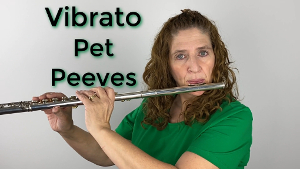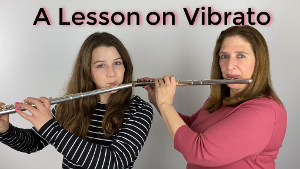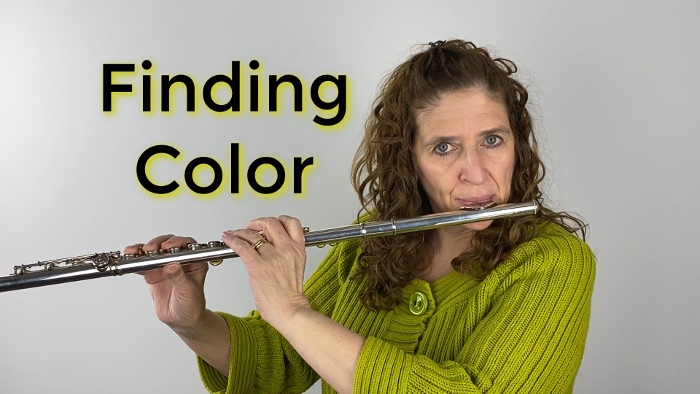Do you change your tone color when you practice solos? Do you even think about it as you play? For that matter what is tone color?
Using tone color in a solo or performance is something that separates the professional from the amateur. Knowing how and when to use tone color makes performances of the same piece differ from performer to performer. But it can be one of those ethereal ideas that one can’t possibly do without being gifted. I’m here to tell you that you too can use tone color. It is just a matter of understanding how to get a different color on the flute using vowel sounds.
Tone color was a huge mystery to me when I was growing up and even in the first year of college. I didn’t really get tone color.
What is Tone Color?
What was I supposed to do with it?
How was I supposed to change it?
What does it really mean?
So, I have gone on a journey and I still feel like I’m on a journey of tone color. Sometimes tone color can just be an instinctual thing that you don’t even know you’re doing. That is fine when you are performing. But as a teacher, you want to know what is it that you’re doing, so that you can teach it to your students. Let me explain this by using the second movement of Muczynski’s Three Preludes for Flute Alone. The opening line is a great one for talking about color as the slow melodic line lends itself to color change.
I must be intentional if I am going to change color. Because I need to understand what I am doing, so that I will be able to repeat it in future practice sessions. There is nothing wrong with instinctual changing of tone color. Many times, this just happens. To find out if you do this without thinking, record yourself then listen for color change. Do you do something different with your tone as you are playing? Analyze it. If you like what you have done, try to repeat it.
ee vs. ah vs. o
Let’s look at the opening phrase of the Muczynski. The opening is beautiful and slow but it’s Muczynski, so you know that there are a lot of choices. Since it is a modern piece, you might play the opening 3 different ways. I might begin with a little darker and a little edgier sound. To do that I will widen my embouchure and blow across the edge or use a more spread embouchure with an ee vowel shape inside my mouth.
The thing about color is that it can change. Just because I used that edgier sound at the beginning does not mean that I must keep it all the way through the phrase. Maybe I will change the vowel sound to ah as I get to the end of the first phrase. The ah vowel gives a more open woodier sound.
Vibrato is a color too. Don’t be afraid to use vibrato as color. You can make the vibrato slower when you use a woodier sound and faster vibrato or more prominent vibrato when you want the edgier sound. Also, in this Muczynski solo, vibrato should be more intense with the 3rd octave notes. So, I have a little bit faster vibrato. I’m keeping that ee sound and change.
Vibrato is Color
Now I might play that same opening phrase and change the color. What if I used a vowel shape of o? What kind of sound does that give me? Let me change the vibrato as I go and listen to how that changes the phrase. I like to change the angle of my air on the lip plate. I can achieve different colors when I do that. There is a dark modern sound that I can produce when I move the air stream down on the lip plate strike edge. Now I need to experiment with these different colors and vibratos and see what shape I want this phrase to take with my color.
There isn’t a formula for the perfect color or vibrato for each phrase. It is what you like that is important and you get to experiment around with that. Changing the vowel shape inside your mouth is a great way to start changing the color and experimenting around. So, let your ear guide you as you try different colors. It’s so much fun for you to make your own music and not always to make someone else’s music.
Have fun with your tone colors. Use them to start experimenting and see what music you can make.
Have fun!
DoctorFlute
Watch me demonstrate this:
Finding Color in Your Musical Line – FluteTips 146

Vibrato Pet Peeves on the Flute – FluteTips 117

Live Flute Lesson on Vibrato with 12-Year-Old Student Waverly – FluteTips 122
Watch me as I teach my 12-year-old daughter in real-time how to play with vibrato:

Controlled Air Stream on the Flute – FluteTips 129

